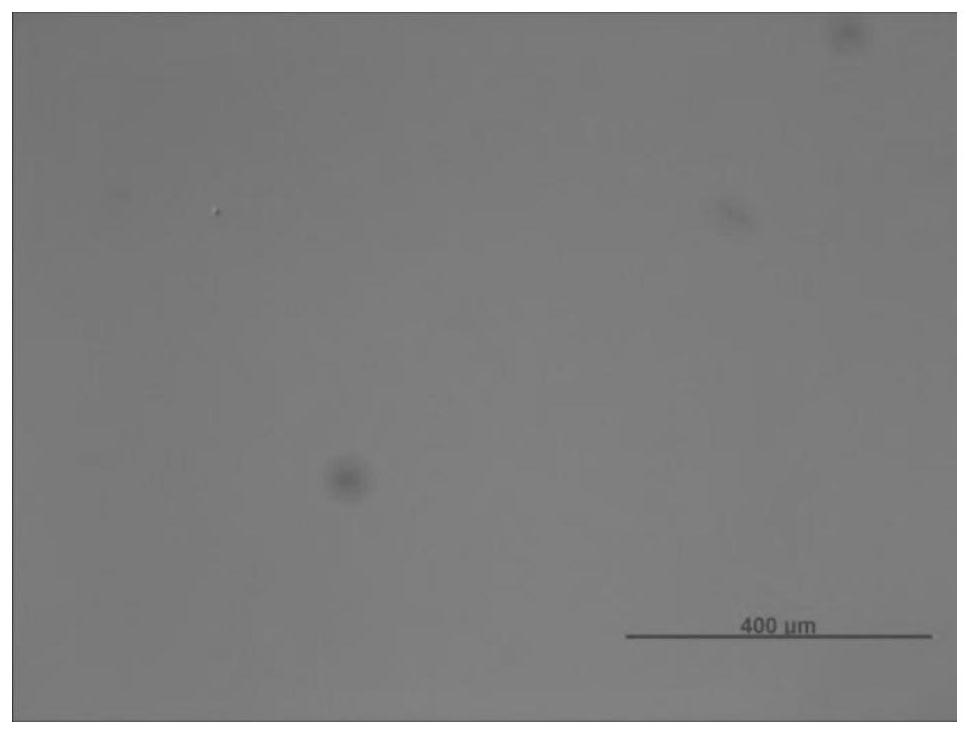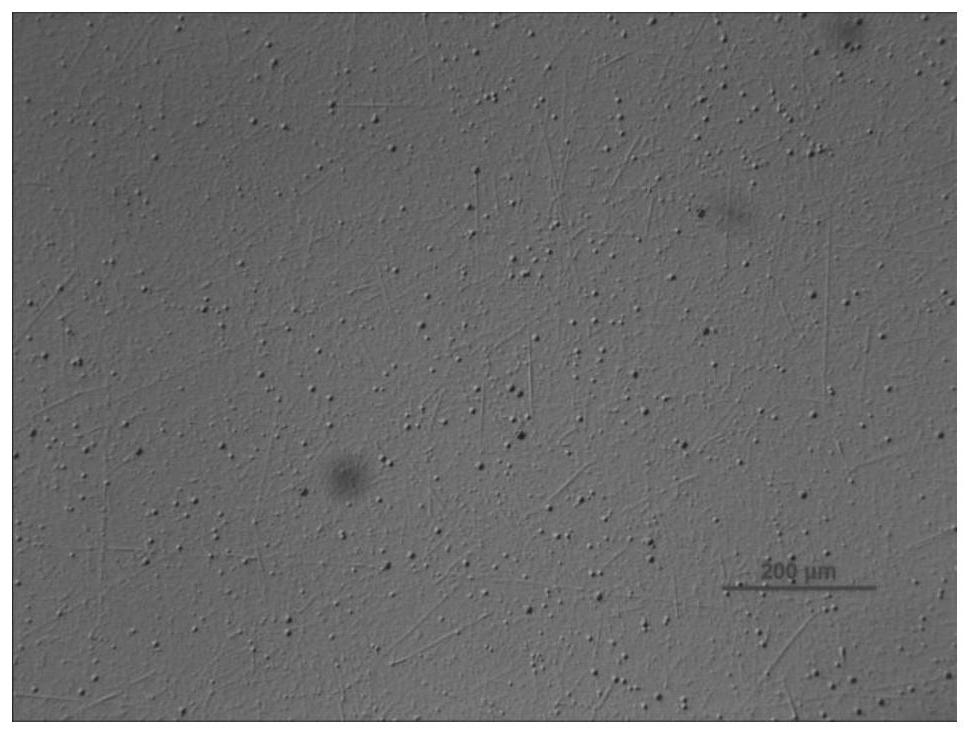Quartz and methods of increasing its resistance to laser damage
A technology of anti-laser and quartz, which is applied in the field of optical materials, can solve the problems that subsurface microcracks and subsurface defects cannot be completely eliminated, thermal distortion of large-diameter components, and the existence of a pit surface, etc., to achieve stress resistance, uniform heating, and good phase capacitive effect
- Summary
- Abstract
- Description
- Claims
- Application Information
AI Technical Summary
Problems solved by technology
Method used
Image
Examples
Embodiment 1
[0043] This embodiment provides a method for increasing the anti-laser damage performance of quartz, comprising the following steps:
[0044] S1, pretreatment;
[0045] Fix a 50mm×50mm×5mm fused silica substrate on a polytetrafluoroethylene fixture, first use 10% Micro90 alkaline washing solution to ultrasonically clean it for 1 hour, then rinse it with ultrapure water for 1 hour, and then use acid solution washing solution to ultrasonically clean it for 1 hour. Wash for 2 hours and rinse with ultrapure water for 1 hour. Wherein, the acid liquid is a liquid obtained by mixing nitric acid and hydrogen peroxide at a volume ratio of 1.5:1.
[0046] S2, etching;
[0047] Etching with hydrofluoric acid buffer solution for 2 hours and rinsing with ultrapure water for 1 hour to obtain a fused silica substrate with an etching depth of 20 microns. Wherein, the hydrofluoric acid buffer solution is prepared by mixing hydrofluoric acid, fluoride salt and water in a volume ratio of 1:4:...
Embodiment 2
[0053] This embodiment provides a method for increasing the anti-laser damage performance of quartz, comprising the following steps:
[0054] S1, pretreatment;
[0055] Fix a 50mm×50mm×5mm fused silica substrate on a polytetrafluoroethylene fixture, first use 10% Micro90 alkaline washing solution to ultrasonically clean it for 1 hour, then rinse it with ultrapure water for 1 hour, and then use acid solution washing solution to ultrasonically clean it for 1 hour. Wash for 1 hour and rinse with ultrapure water for 1 hour. Wherein, the acid liquid is a liquid obtained by mixing nitric acid and hydrogen peroxide at a volume ratio of 2.5:1.
[0056] S2, etching;
[0057] Etching with hydrofluoric acid buffer solution for 3 hours and rinsing with ultrapure water for 1 hour to obtain a fused silica substrate with an etching depth of 30 microns. Wherein, the hydrofluoric acid buffer solution is prepared by mixing hydrofluoric acid, fluoride salt and water in a volume ratio of 1:4:1...
Embodiment 3
[0062] This embodiment provides a method for increasing the anti-laser damage performance of quartz, comprising the following steps:
[0063] S1, pretreatment;
[0064] Fix a 50mm×50mm×5mm fused silica substrate on a polytetrafluoroethylene fixture, first use 10% Micro90 alkaline washing solution to ultrasonically clean it for 1 hour, then rinse it with ultrapure water for 0.5 hour, and then use acid solution washing solution to ultrasonically clean it. Wash for 2 hours and rinse with ultrapure water for 1 hour. Wherein, the acid liquid is a liquid obtained by mixing nitric acid and hydrogen peroxide at a volume ratio of 2:1.
[0065] S2, etching;
[0066] Etching with hydrofluoric acid buffer solution for 0.5 hour and rinsing with ultrapure water for 1 hour to obtain a fused silica substrate with an etching depth of 5 microns. Wherein, the hydrofluoric acid buffer solution is prepared by mixing hydrofluoric acid, fluoride salt and water according to a volume ratio of 1:4:8...
PUM
| Property | Measurement | Unit |
|---|---|---|
| tensile strength | aaaaa | aaaaa |
| depth | aaaaa | aaaaa |
| depth | aaaaa | aaaaa |
Abstract
Description
Claims
Application Information
 Login to View More
Login to View More - R&D
- Intellectual Property
- Life Sciences
- Materials
- Tech Scout
- Unparalleled Data Quality
- Higher Quality Content
- 60% Fewer Hallucinations
Browse by: Latest US Patents, China's latest patents, Technical Efficacy Thesaurus, Application Domain, Technology Topic, Popular Technical Reports.
© 2025 PatSnap. All rights reserved.Legal|Privacy policy|Modern Slavery Act Transparency Statement|Sitemap|About US| Contact US: help@patsnap.com



